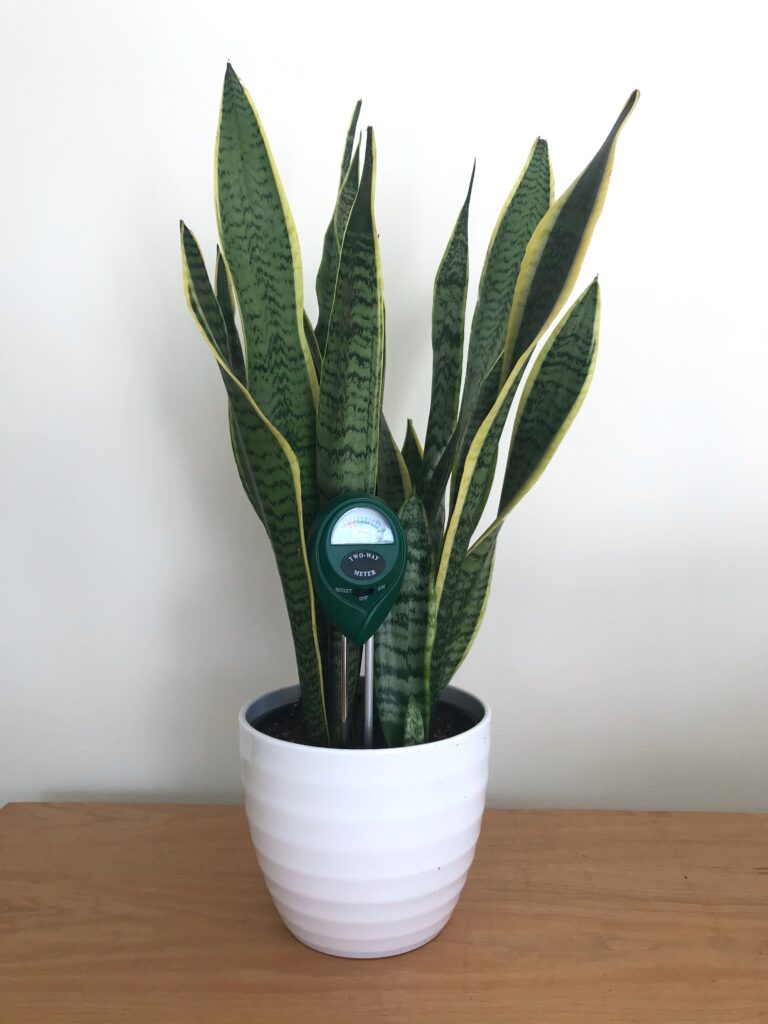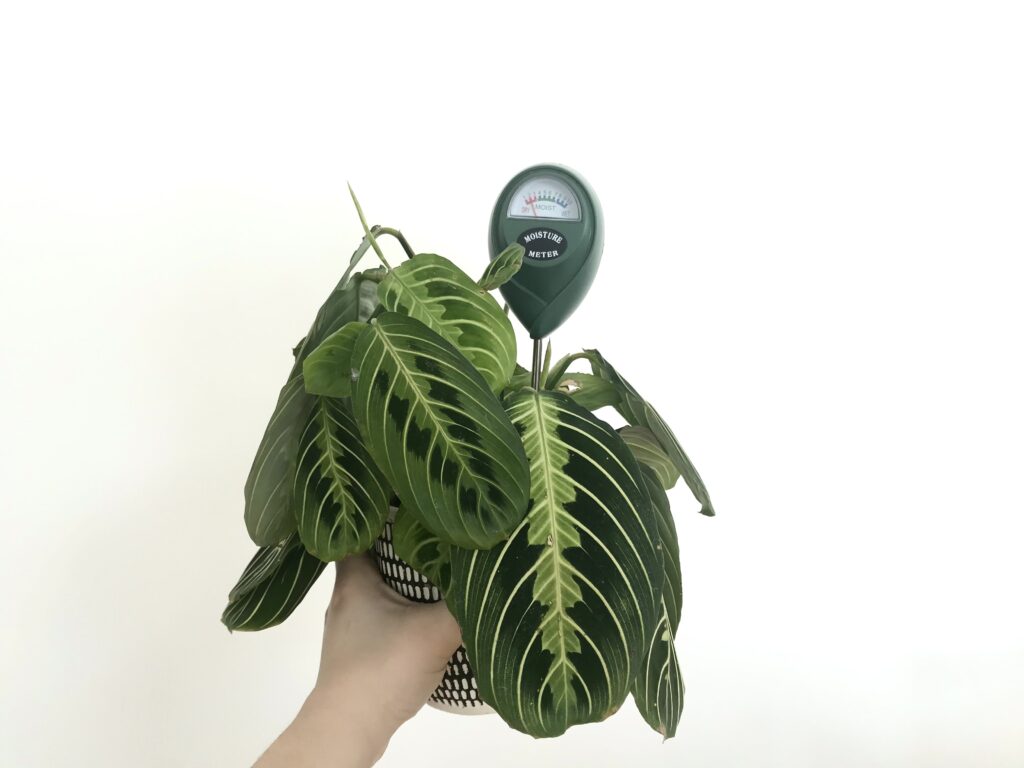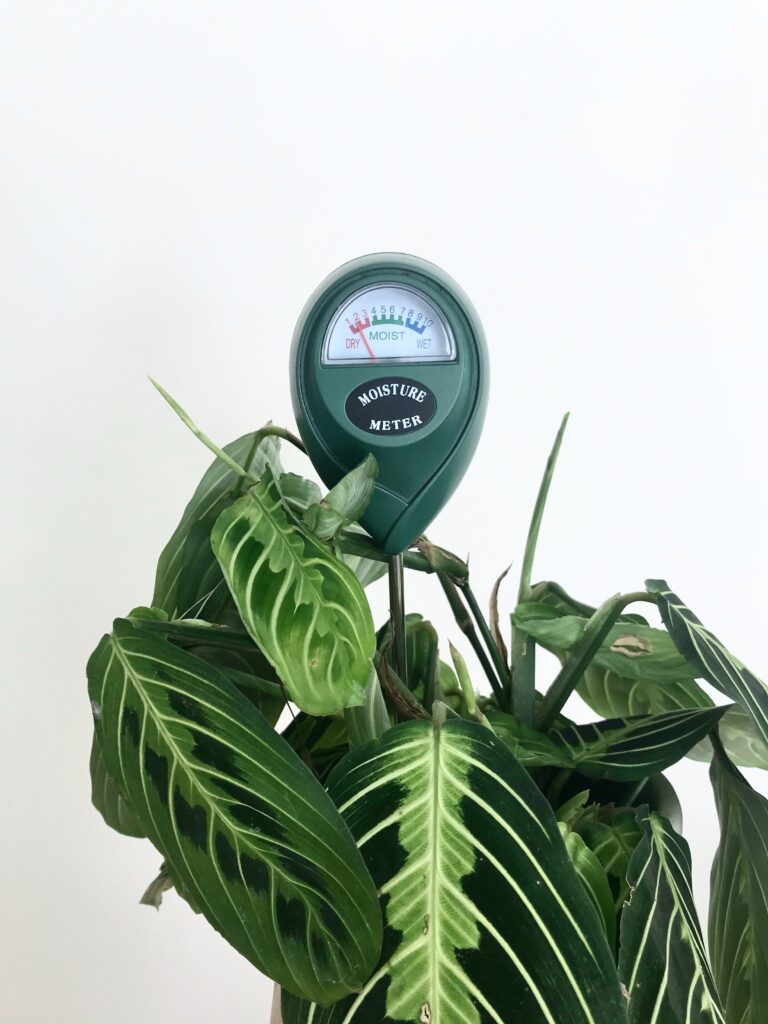
When I first got into plant parenthood, I found that watering was, by far, the most complicated aspect to grasp. Not wanting my new plants to die of thirst, I overwatered. Rudy, my rubber tree, was the primary victim. He’s a large plant, so watering him is difficult. I never knew when the soil was dry since the planter was 12″ and I couldn’t tell the moisture level in the middle. Through clenched teeth I’d reach for the watering can and figured “better to water now” and I did. His leaves yellowed and dropped and had fungus gnats for weeks. I didn’t understand what I was doing wrong and didn’t know how to correct it. What a mess.

How I Learned to Water Plants Properly
Two things happened that changed this. First, I bought a moisture meter. I was working at a garden center at the time and kept selling these things called moisture meters to people. The name sounded gross, sure, but they were wildly popular. I finally asked what it was and learned it would literally solve Rudy’s soggy-diaper-soil problem. The moisture meter told me Rudy was upset and very moist. Makes sense.
The Light Pot Technique
One other thing happened: I learned how to water. Again, I worked at garden center, so one of my jobs was watering all of the indoor plants. Since there were hundreds of plants and all kinds, watering each one every day wasn’t ideal. Instead, I learned the “light pot technique.” Not a technical term but one that illustrates it perfectly.
First, you water a plant. A full water, not drops or a splash, but a deep water. Make sure the plant lives in a warm and sunny location. The next day, do not water it – instead, pick up the pot. You’ll notice that each day the pot gets a smmmiiiddggeee lighter. After 7-10 days or so you typically can water again, but just to be sure I use the moisture meter and 9x out of 10 it’s time for more water.
This is lengthy I know, but stick with me. In tandem, the meter and the technique work great and I learned how to properly water a plant. Now, I no longer need a moisture meter, but I still have one for Monty, Rudy, and my giant plants. This little device was crucial in helping me learn how and when to water plants, especially large houseplants. Daryl at Houseplantjournal does a great and much more technical illustration on how to water and when in his book, which is also great to read as well.

But do I Really Need a Moisture Meter?
After reading all of this, I’d say it’s up to you. There’s no shame in owning one and I really do find it impossible to water any large plant without one. I think, whether you’re a new plant parent or veteran, it’s an under $20 thing to keep in your arsenal. In the beginning of my plant journey I was so grateful to have something that kept the guess work out of watering.
My Favorite Moisture Meter
I’ve had this one on my shop Amazon page forever. This is the original one I started and still use. I just love how simple it is to use. I also have the dual meter (pictured in the Snake Plant above) which I use for outdoor planters since it also tests for soil PH levels.




I just got a moisture meter and it really is game changing. I think (like you say) it will help me to learn when my plants are ready for water.
And the next game changer in our house too, is our litter robot!! My hubbie talked me into it and I truly can’t imagine not having it now!